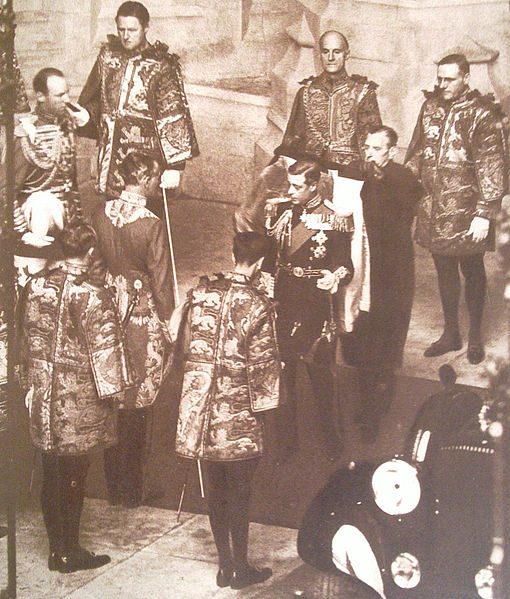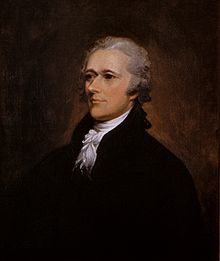Winner of the Spring 2019 StMU History Media Award for
Best Article in the Category of “World History”
As the year 1936 dawned in the United Kingdom, a dark cloud hung over the British people. Their king, George V, the man that embodied British stoicism and traditionalism, was dying. His health had been failing for years, and now he was in his final days with his family gathered at his bedside. For his son and heir, David Prince of Wales, his father’s imminent death meant the beginning of a whole new life. As King-Emperor, he would be expected to continue the traditions set by his predecessors. That meant keeping a rigorous schedule of ceremonies and public appearances as well as meetings with important government ministers. As David sat by his father’s bedside, there is no doubt that his new role was on his mind. Finally, at five minutes past midnight on January 20, 1936 King George V took his last breath. David stood still not saying anything at all, but then his mother, Queen Mary, turned to him, bowed her head, took his hand, and kissed it. It was a small yet significant gesture of respect, as David was now King-Emperor. However, the new king had one serious issue: he was in love. The people of Great Britain did not know it then, but in less than a year David would shock the world and change the history of his nation by being the first British king to ever voluntarily give up his throne.1
As his reign began, David (now Edward VIII) found himself in a favorable position. He was young and handsome; his dark blonde hair and deep blue eyes made him the most eligible bachelor in the world. He was also unbelievably popular, having been on tours all over the world on behalf of the British nation. The prince had endeared himself to the world and he had become an instantly recognizable face. However, for all his charms, the new king had one terrible vice: his lust for women. As the Prince of Wales, David had carried on many affairs with married women. In fact, on one foreign tour, he seduced the wife of the British governor who also happened to be his host. It was one such lover, Thelma, Lady Furness, who introduced him to Mrs. Wallis Warfield Simpson in 1931. The two became fast friends, and when Thelma departed for the United States in 1934, Wallis took her place at the prince’s side. The prince adored Wallis; he enjoyed pampering her and giving her beautiful jewelry. By January of 1936, David was deeply in love with Wallis. However, he understood that the powers that be (namely, the Anglican Church, the ruling Conservative party, and his own family) would never accept Wallis as a queen unless he could overturn the haughty traditions of his forbears.2

From the moment he took the throne, the new king was determined to rock the boat of state. He wanted to be a modern monarch, but more importantly, he wanted the people to accept him for who he was. He carried his own umbrella, wore stylish bowler hats, flew airplanes, and skipped church on Sundays. All this may seem normal to us today, but to the British people of 1936, the new king’s personal habits were shocking to say the least. His popularity in all circles began to ebb almost immediately. But nothing could have prepared anyone for the scandal that was Wallis Simpson. She was an American divorcée, and to those close to the king, she qualified as an avid social climber looking to catch the biggest prize of them all: the new King-Emperor. Nevertheless, Wallis continued to appear at the king’s side because, for him, none of those opinions mattered. He loved Wallis and that was all there was to it.3
In the summer of 1936, the king embarked on a tour of the Balkan states with Wallis by his side. They began their journey at the Yugoslavian port of Sibenik aboard the luxury yacht Nahlin. The weather was beautiful, as the Nahlin and its eminent passengers sailed through the picturesque blue waters of the Adriatic, Aegean, and Mediterranean Seas. They stopped at quaint fishing villages and small seaside towns, as well as large capital cities such as Athens and Istanbul. It truly was the perfect romantic setting, and the king and Wallis’ courtship flourished. They were photographed holding hands and embracing each other on the deck of the Nahlin; and it was rumored that the couple also consummated their relationship during the trip. The couple was immensely happy, but around the world a storm was brewing and was about to envelop the happy couple.4
While the king was on holiday with Wallis, foreign papers, especially in the United States, began to report wildly on David’s relationship with Wallis. The sensational headlines that ran in the American press exposed the King—Wallis love affair to the entire American public. It was only a matter of time before the newspapers and magazines carried the shocking news to the United Kingdom. Indeed, when the American newspapers and magazines arrived, the king’s government had the story removed from their pages before release. It was not until after the king’s return in September that a London weekly magazine featured a picture of him and Wallis together on its front page with the caption, “The Duke of Lancaster (the king’s Alias) and a Guest.”5 The king, who was in Scotland at the time, received a telegram from his private secretary informing him that Prime Minister Stanley Baldwin wanted to have a word with him. He knew it could not be good news. Indeed, some of the most difficult days of his life lay just ahead.6

On Tuesday morning, October 23, the king greeted Prime Minister Baldwin at his home at Fort Belvedere. The two men adjourned to the drawing room where the Prime Minister poured himself a drink. Outwardly, both men were calm, but there was a tension in the air. It became clear to the king that the subject on his prime minister’s mind was Wallis’ impending divorce case that was due to be heard in court later that week. Prime Minister Baldwin asked if the king intended to interfere in the divorce proceedings. The king replied in the negative, citing that he had no right to interfere in the life of a private individual. He knew that Baldwin was beating around the bush; the real question Baldwin wanted to ask was whether or not he and Wallis intended to marry. Perhaps, mercifully, Baldwin departed the king’s company without having posed the question. The answer, of course, was yes, the king had every intention of marrying Wallis and making her his queen. Four days later, Wallis was granted a decree nisi, granting her a full divorce in six months. If the king had his way, he would be free to marry Wallis in late April 1937, and then he and Wallis would be crowned together the following month. However, this was never to be. In fact, the king’s meeting with Baldwin was the beginning of the end of his reign.7
As October lapsed into November, the king continued to keep his laundry list of appointments. He met with foreign dignitaries (including the new ambassador from Nazi Germany Herr Joachim von Ribbentrop), and on November 3, in a grand ceremony, he opened Parliament. However, the king’s personal issues continued to cast a dark pall over his reign. The press had heightened its attacks against Wallis, and public opinion in the United Kingdom and other parts of the empire began to show a clear consensus: Wallis would never be Queen-Empress. On the 13th, the king received a letter from his private secretary, Alec Hardinge, that informed him that the Prime Minister and his cabinet intended to meet tomorrow to discuss the “serious situation which is developing.” Hardinge confessed that the resignation of prominent government minsters was a serious possibility if the king carried on with Wallis. He then concluded his letter by suggesting Wallis be sent abroad, permanently. The king was so incensed by this suggestion that he could hardly sleep that night. He never thought that the woman he loved would be the cause of such great trouble, but indeed she was. However, he remained determined in his resolve to marry Wallis, even if he had to give up everything in order to do so. As he lay tossing and turning in his bed that night, the king decided that he wanted to meet with his Prime Minister and speak to him himself.8
The meeting between monarch and minister took place just two days after the king received the letter from his personal secretary. The two men met at Buckingham Palace at 6:30 in the evening, and this time there would be no beating around the bush from either of them. The king asked Baldwin outright if any cabinet ministers would resign if he married Wallis. Baldwin replied that at least three would almost certainly resign, and he also stated his belief that no king of England should ever marry a divorced woman. Baldwin asked the king if his marriage to Wallis was inevitable. The king replied that the marriage was a condition of his staying on the throne, and if that was unacceptable, he was “prepared to go.”9 Prime Minister Baldwin was awestruck, and merely replied that he thought, “it is impossible for me to make any comment on it today.”10 The Prime Minister then departed, but nevertheless, the foundation was now laid for the final act in the harrowing drama that was Edward VIII’s short reign.11
Later that night, while at dinner with his mother Queen Mary, the king informed her and his sister of his intention to marry Wallis. The two women were naturally sympathetic until the king told them he was willing to abdicate in order to marry Wallis. At that Queen Mary, usually remarkably composed, was visibly flustered. Duty-bound as she was, she could not accept that her son was willing to give up his sacred duty to his people for a woman. Her reaction was one that summed up the feeling of the entire royal family. They believed that if the king were to abdicate, it would bring the greatest shame upon them, and permanently damage their standing with their peoples all over the world. The king asked his mother just to meet Wallis once, but she refused. Over the next several days the king took his brothers into his confidence as well. The hardest hit was Albert, who stood to inherit the throne if the king decided to abdicate, and that is indeed the direction the king was headed in. However, before his decision became final, the king had one last card to play.12
By the close of November, the king had exhausted almost all his options. He knew by now that there was no hope of Wallis ever becoming queen. However, he decided to proffer to his government a morganatic marriage. In such an arrangement, he and Wallis would marry, but she would not inherit any of his royal titles. He would remain king, and she would be a commoner still. Personally, the king found the option distasteful, but it was the only one he had left to make. Once the proposition was made to Prime Minister Baldwin, all the king had to do now was wait. In the interim, Baldwin consulted Parliament, the Cabinet, and the British Dominions. Finally, in the first week of December, the long-awaited answer came: it was a unanimous no. A marriage between Wallis and the king was unacceptable no matter the terms. For the king, it was a devastating blow, but he knew now what he must do. He had said that he was prepared to go, and now he was going to do just that.13

On the morning of December 10, 1936, the king rose for breakfast and began to sign his abdication papers, including his Instrument of Abdication. Once he finished, his brothers added their signatures as well. From the moment he signed his name to the documents, he ceased being King-Emperor. In accordance with the agreement he made with his brother, the new king George VI, David would be given the title His Royal Highness Duke of Windsor, and would receive an annual allowance. Unfortunately, he was also forced to leave his former kingdom for at least six months. The next morning, December 11, 1936, when the Duke woke up he was no longer king of one of the world’s most powerful nations. He was no longer emperor of history’s largest empire, or head of his illustrious family. However he was free to marry Wallis, and that was all he desired. His first act as ex-king was to broadcast an abdication speech to his former subjects. Once complete, he departed from the United Kingdom to join Wallis in their new life together.14 Both of them had been through so much in the last eleven months. David had given up everything for Wallis, and she had suffered at the hands of the vicious and unrelenting press. In the end, it was all worth it, as the two were married on June 3, 1937, and lived thirty-five happy years together. However, David’s quest for love did have negative repercussions. He left his poor brother, George VI, to fill his enormous shoes. David had been groomed for the role of monarch since he was a little boy, but his brother had no such grooming. On top of that, David had been immensely popular before his reign, but his shy and awkward brother enjoyed very little popularity. Perhaps worst of all was the impact his actions had on his niece, the ten year old Princess Elizabeth. She was now next in line to become queen. A life of endless scrutiny and criticism awaited her, such is the burden of wearing the crown. It was a life her father never wanted for her, but she never had a voice in the matter. David had made the decision for her, for them all, when he gave up his throne. 15
I have found it impossible to carry the heavy burden of responsibility and to discharge my duties as King, as I would wish to do, without the help and support of the woman I love.16
- HRH Duke of Windsor, A King’s Story: The Memoirs of the Duke of Windsor (New York: G.P. Putnam and Sons, 1951), 263-266. ↵
- Robert Lacey, The Crown: The Official Companion Volume One, Elizabeth II, Winston Churchill, and the Making of a Young Queen 1947-1952 (New York: Crown Archetype, 2017), 110-112. ↵
- Ralph G. Martin, The Woman He Loved (New York: Simon and Schuster, 1973), 165. ↵
- HRH Duke of Windsor, A King’s Story: The Memoirs of the Duke of Windsor (New York: G.P. Putnam and Sons, 1951), 308-309. ↵
- Ralph G. Martin, The Woman He Loved (New York: Simon and Schuster, 1973), 173. ↵
- HRH Duke of Windsor, A King’s Story: The Memoirs of the Duke of Windsor (New York: G.P. Putnam and Sons, 1951), 316-317. ↵
- HRH Duke of Windsor, A King’s Story: The Memoirs of the Duke of Windsor (New York: G.P. Putnam and Sons, 1951), 318-321. ↵
- HRH Duke of Windsor, A King’s Story: The Memoirs of the Duke of Windsor (New York: G.P. Putnam and Sons, 1951), 322-328. ↵
- HRH Duke of Windsor, quoted in HRH Duke of Windsor, A King’s Story: The Memoirs of the Duke of Windsor (New York: G.P. Putnam and Sons, 1951), 332. ↵
- Stanley Baldwin, quoted in HRH Duke of Windsor, A King’s Story: The Memoirs of the Duke of Windsor (New York: G.P. Putnam and Sons, 1951), 333. ↵
- HRH Duke of Windsor, A King’s Story: The Memoirs of the Duke of Windsor (New York: G.P. Putnam and Sons, 1951), 329-333. ↵
- HRH Duke of Windsor, A King’s Story: The Memoirs of the Duke of Windsor (New York: G.P. Putnam and Sons, 1951), 333-336. ↵
- HRH Duke of Windsor, A King’s Story: The Memoirs of the Duke of Windsor (New York: G.P. Putnam and Sons, 1951), 341-343. ↵
- HRH Duke of Windsor, A King’s Story: The Memoirs of the Duke of Windsor (New York: G.P. Putnam and Sons, 1951), 405-410. ↵
- Encyclopedia of World Biography, 2004, s.v. “Edward VIII.” ↵
- HRH Duke of Windsor, “Speech to his people addressing his abdication” (1936), in A King’s Story: The Memoirs of the Duke of Windsor, HRH Duke of Windsor (New York: G.P. Putnam and Sons, 1951), 410. ↵




76 comments
Krystal Rodriguez
I love the amount of detail in this article. I had not heard of King Edward before so reading this article gave me a lot of insight. It is quite sad that he had to make sacrifices to be with he woman he loved even if it meant not being king. It must have been hard for him considering this is where he was born and it was what he was born to do. It really shows how even choosing someone to love is not an option for him and for many other people. I guess he really loved her to give up his throne.
Danniella Villarreal
It is worth noting that he was never that good of a king even if he was remarkably popular. people usually want to have power and have control over other things or people. we do not usually hear about a king who gave up his throne for any reason, even if it was a serious issue that needs the king to give up. Very nicely written article.
Engelbert Madrid
For some people, they considered Edward VIII’s decision to stay with Wallis Simpson was a bad one. However, Prince Edward VIII did not care what his royal family thought about Wallis, because he truly felt in love with her. I admire his decision, because it was a tough one, and I think most men would have chosen to stay as a king rather than staying with their future wife. This was a great article to read, and I found it interesting.
Christopher Hohman
Nice article. King Edward’s abdication truly shocked the world in 1936. To think that a king would marry a commoner was unthinkable much less a twice divorced commoner. It is worth noting that he was never that good of a king even if he was remarkably popular. He wanted the lifestyle of royalty without the work that comes with it. It is also worth noting that he was a Nazi sympathizer.
Christopher Metta Bexar
I agree. It is also not usually discussed that his selfish behavior was the cause of his brother’s death. George VI was a man who was shy and from what I have heard a bit delicate of health. The strain of leading Britain through the war shortened his life.Something the Duke of Windsor never worried about.
The article seems honest in its assessment of him. And somewhat understanding of Wallis a woman put in an uncomfortable position.
Nawaf Almarwaie
people usually want to have a power and have control over other things or people, we saw in the history a father who kills his son for a throne, or a brother who kills his brother for a throne, and we used to hear about this kind of stories in our lives, however, we do not usually hear about a king who gave up his throne for any reason, even if it was serious issue that needs the king to give up. in this story it shocked me that the king gave up the throne because of the love of his life, the story really inspired me that sometimes people need to give up of something seems important to other for something they really believe in.
Hali Garcia
I enjoyed reading this article because it was very informative and well written. I do not know anything about this so this article was very informative for me. It fascinates me to know that King Edward VIII gave up the throne for the woman he loved and that he faced backlash because of their relationship. Overall, this is a great article and I enjoyed reading it.
Fatima Navarro
The way this article is so well-written adds to the interesting story development throughout the article. From beginning to end, there is engagement from the writer captivating the reader’s interest. As a king, the majority wish to fulfill the desires and hopes/wishes of your people, but King Edward VIII decided to step down and pursuit his own dream. I enjoyed this article.
Samantha Ruvalcaba
I really enjoyed this article, because it touches on a story I had overlooked when watching “The Crown” of Queen Elizabeth’s uncle. I think the author did a great job by how they broke down the story and arranged it chronologically. I could tell that a lot of research was done on the subject, it’s execution fit what one would expect for doing that much researching. Great job.
Rosario Moreno
So David had it all, anything he wanted, and then he fell in love. But he fell in love with a married woman, who yes was getting a divorce but still. How scandalous it must have been at that time. I liked how you included the conversation between David and Queen Mary, it made me laugh because she was just astonished that he would give up everything for Wallis. Great article, well written and informative. It was nice to see that he followed his heart, but it did have consequences.
Makenzie Santana
It is admirable to know that King Edward VIII had given up his throne to be with the one his heart was given to, a commoner. It is sad that a class system like what it was during those times was a harsh contributor to who claimed what kind of status in society. It must’ve been a difficult decision for King Edward to step down and give up everything.